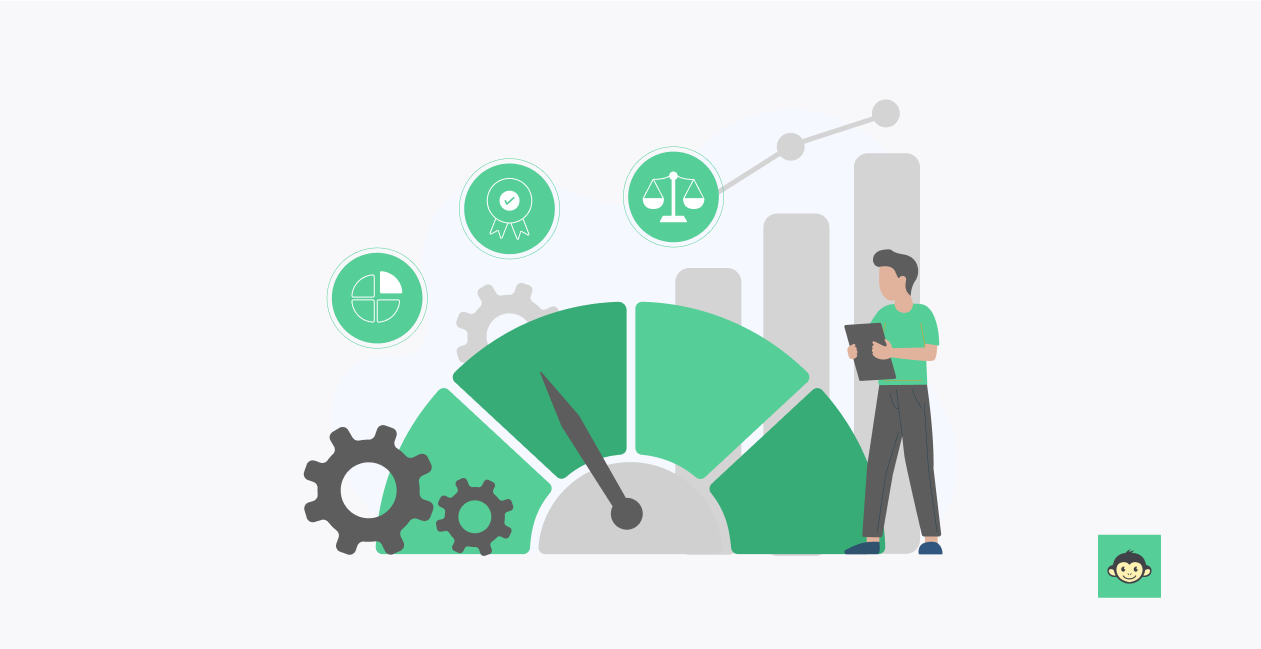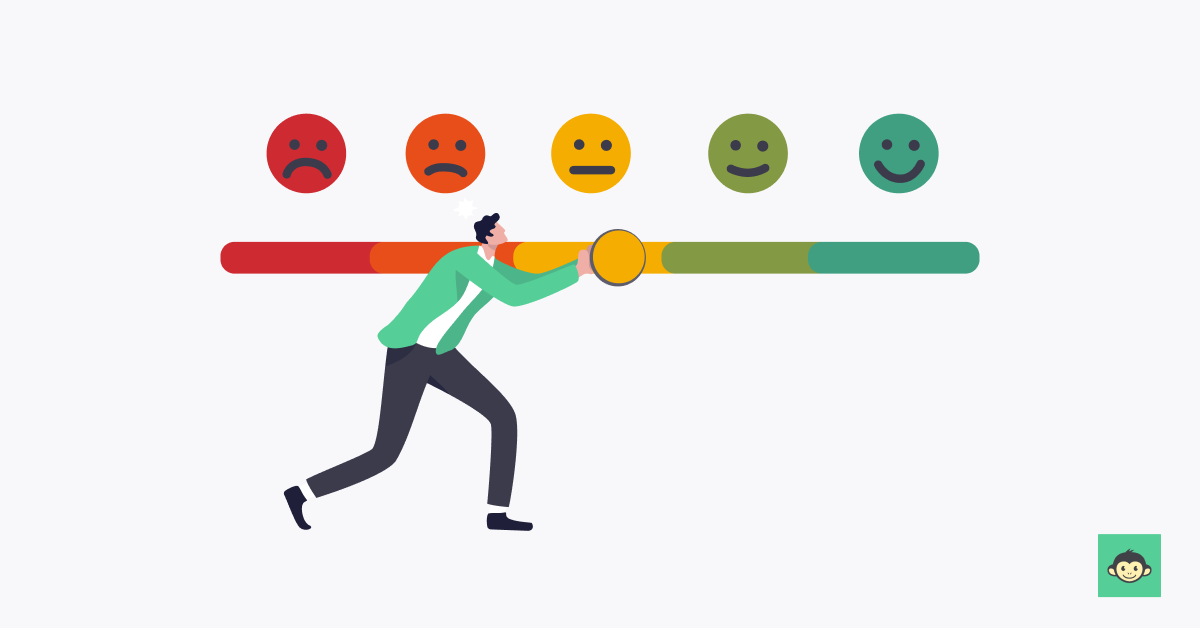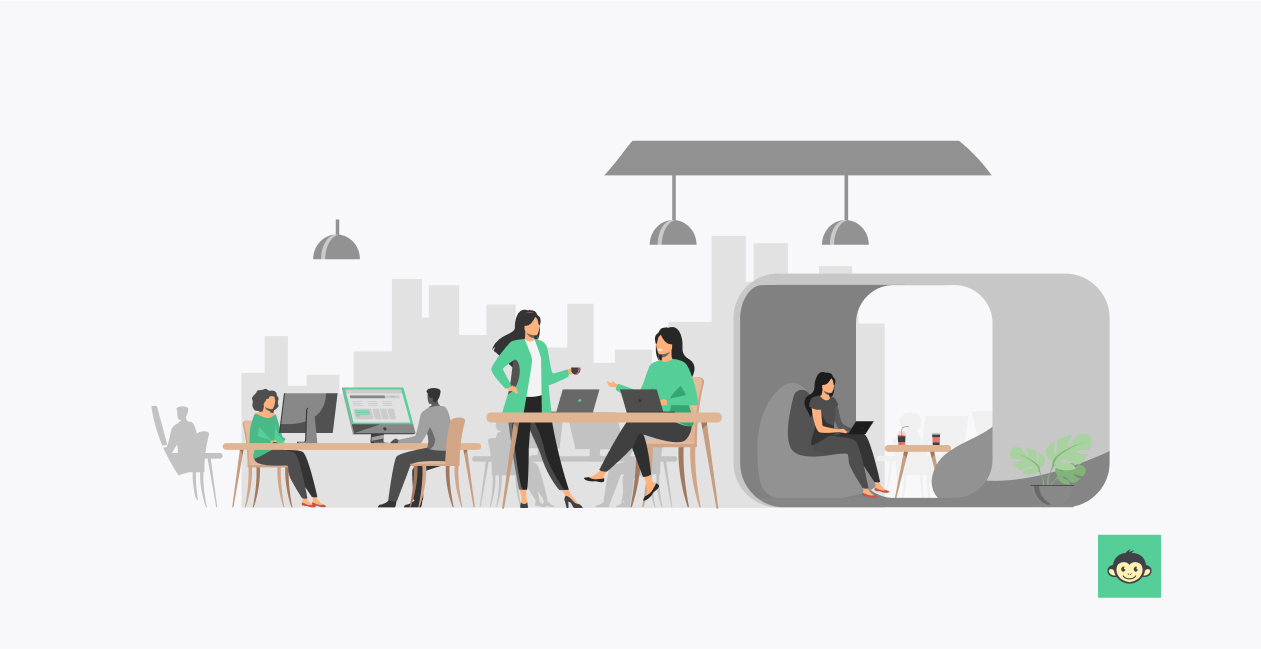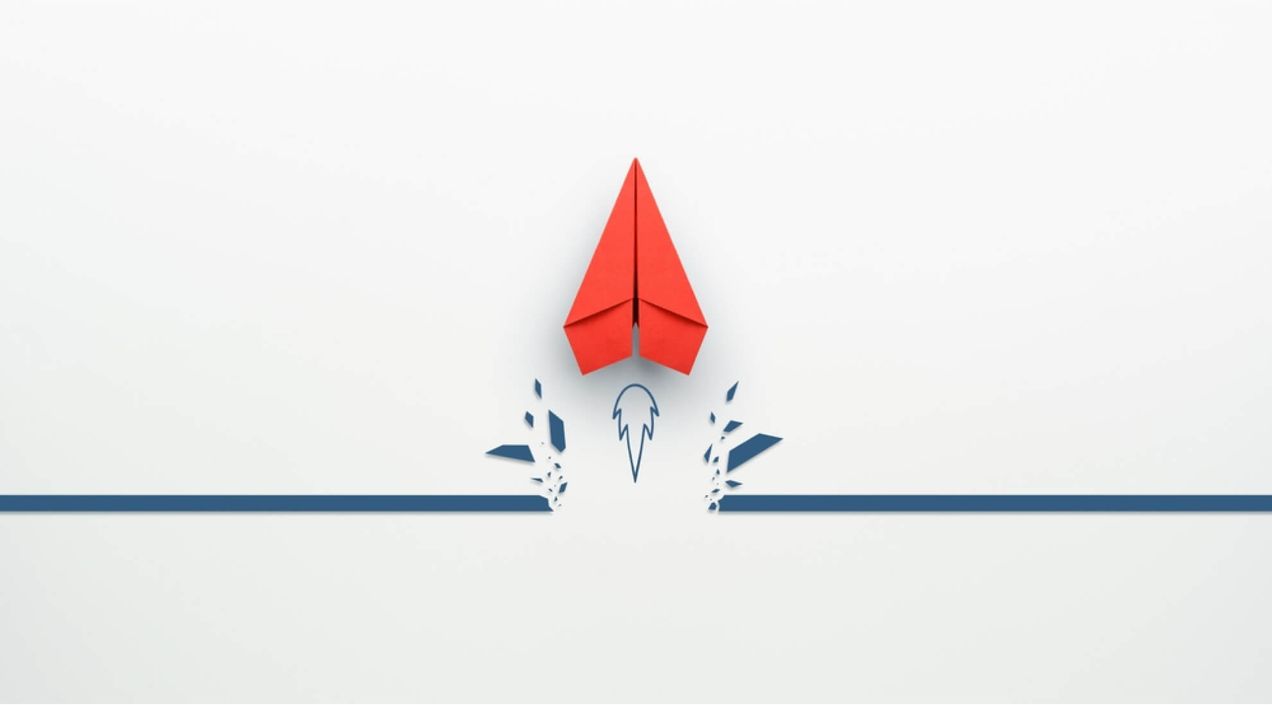Employee experience vs employee engagement: What’s the difference?

As our quirky philosopher of the day, Aristotle (yes, that Aristotle!), once said, "The whole is greater than the sum of its parts."
Aristotle, we appreciate your ancient wisdom, but let's apply it to our modern-day corporate conundrum.
In this case, the "parts" are the individuals working within your organization, and the "whole" is your company's success. The magic sauce that binds these parts together is a mixture of employee experience and employee engagement.
They are like peanut butter and jelly or Batman and Robin—they're a dynamic duo, but they've got distinct flavors. So, grab your notepads, polish your capes, and let's explore the fascinating world of employee experience (EX) and employee engagement (EE)!
Imagine employee engagement as the pulse of your organization. It's the excitement, motivation, and dedication your employees bring to the table. They're not just showing up for a paycheck; they're invested in the company mission, the vision, and the foosball tournaments in the break room.
On the other hand, employee experience is your ship's cruise director. It's all about the journey—the daily grind, the work environment, the tools and tech that make your employees' lives easier. EX ensures that the voyage is smooth, enjoyable, and full of memorable moments.
In this blog, we will explore the differences between the two and how they come together to contribute to the overall success of an organization.
What is employee engagement?

Employee engagement (EE) is about creating a workforce that's truly invested in the success of the company. Picture this: engaged employees are like the cheerleaders of your organization, waving pom-poms of dedication and shouting, "Go team!" So, what exactly is employee engagement, and why does it matter so much?
At its core, employee engagement is all about the commitment, enthusiasm, and dedication employees bring to their jobs, be it IT, Healthcare, Manufacturing sector, Digital Marketing Agency, Financial Services, and more. It's the difference between having a team that shows up to work just to collect a paycheck and having a team that's genuinely excited about what they do.
Engaged employees are the ones who tackle their tasks with gusto, consistently strive for excellence, and exude a positive energy that's contagious. One of the most striking features of engaged employees is their passion for their work. They don't view their job as a mere series of tasks to complete; they see it as an opportunity to make a meaningful impact.
They also have a profound sense of attachment to their organization and align themselves with its values, goals, and mission. This emotional bond fosters a sense of belonging and loyalty that can be a game-changer for retention and overall company culture.
However, a recent report by Gallup shows that 85% of employees are either unengaged or actively disengaged in their organization. This calls for proactive measures that organizations can take in order to boost engagement with their employees.
What is employee experience?

Employee experience (EX) is the holistic journey that an employee takes throughout their entire tenure within an organization. It encompasses every interaction, perception, and encounter an employee has with their workplace, colleagues, and the organization's culture.
At its heart, employee experience is all about ensuring that this journey is smooth, enjoyable, and meaningful for the employee. It's about creating an environment where employees are not just productive but also happy and fulfilled. So, why is it crucial, and what are its key components?
First and foremost, EX is about creating a positive and supportive work environment. This includes the physical workspace, company culture, and the relationships employees build with their peers and superiors.
A well-designed office space, a culture that promotes inclusivity and work-life balance, and positive interactions with colleagues all contribute to a favorable and positive employee experience here.
Secondly, technology and tools play a pivotal role in enhancing employee experience and engagement. From user-friendly software to efficient communication tools, providing employees with the right resources can make their jobs easier and more enjoyable. It's about removing obstacles and enabling employees to do their best work without unnecessary frustration.
This is critical because most employees are unhappy with their experience. You might be surprised to know that only 13% of employees are fully satisfied with their experience, reported Gartner. So, it's important to set things right from the beginning of an employee lifecycle.
It could be made possible with a well-structured and welcoming onboarding program that sets the tone for an employee's journey. It helps them integrate into the organization smoothly, understand their role and responsibilities, and feel like a valued team member right from day one.
Employee engagement vs employee experience: What’s the difference
In essence, while employee engagement is a crucial component of the overall employee experience, the latter encompasses a broader and more long-term perspective, addressing all aspects of the employee journey. Let’s take a look at the difference between the two.
Scope and focus
Employee experience: It encompasses the entire journey of an employee within the organization and considers every touchpoint, from the initial job application and onboarding to daily work experiences, professional growth, and even the departure process. EX has a broader and more holistic focus on the overall quality of an employer brand and employee's experience.
Employee engagement: It specifically refers to an employee's emotional commitment and connection to their job, team, and organization. It emphasizes the level of enthusiasm, motivation, and dedication that employees bring to their roles.
Timeframe
Employee experience: EX is a long-term perspective that spans an employee's entire tenure within the company. It's concerned with creating a positive, lasting impression throughout an individual's career.
Employee engagement: It is a more immediate and dynamic concept. It reflects an employee's current state of mind and emotional involvement, which can fluctuate over time.
Elements included
Employee experience: EX encompasses a wide range of elements, including the physical work environment, company culture, technology, work-life balance, learning and development opportunities, and more. It's about creating a supportive and enjoyable work environment.
Employee engagement: It primarily focuses on an employee's emotional connection to their work, colleagues, and organization. It relates to their motivation, commitment, and willingness to go the extra mile in their current role.
Measurement
Employee experience: Measuring EX often involves gathering feedback through surveys, interviews, and assessments that evaluate various aspects of the employee journey. It's a more comprehensive and qualitative evaluation.
Employee engagement: It is typically measured through surveys designed to gauge an employee's current level of engagement and job satisfaction. It provides a snapshot of the employee's state of mind at a specific point in time.
Impact
Employee experience: A positive EX can lead to higher employee engagement but also contribute to broader organizational goals, such as attracting top talent, reducing turnover, and fostering a positive company culture.
Employee engagement: Higher EE is directly associated with increased productivity, lower absenteeism, improved customer service, and other performance-related outcomes.
Integration with HR practices
Employee experience: EX involves integrating employee-centric practices into every aspect of HR, including recruitment, onboarding, training, performance management, and offboarding. It aims to create a seamless and positive employee journey throughout their tenure.
Employee engagement: While it influences HR practices, EE often focuses on specific initiatives aimed at boosting motivation and morale, such as recognition programs, team-building activities, and feedback mechanisms.
Influence on organizational strategy
Employee experience: Employee experience strategy decisions by shaping the employer brand and organizational culture. It aligns with the organization's mission, values, and objectives to create a compelling employee value proposition.
Employee engagement: EE is more tactical and operational, often leading to short-term interventions to address immediate issues affecting employee morale and commitment.
Emphasis on employee well-being
Employee experience: EX places a strong emphasis on employee well-being, including physical, mental, and emotional health. It seeks to create a supportive environment that promotes work-life balance, stress management, and overall wellness.
Employee engagement: While it indirectly contributes to employee well-being, EE primarily focuses on enhancing job satisfaction and motivation to drive performance and productivity.
Employee experience vs. employee engagement benchmarks

Employee experience (EX) and employee engagement (EE) are vital aspects of an organization's success, and benchmarking these metrics can provide valuable insights into your workforce's well-being and productivity. Below are some common benchmarks for both EX and EE:
Employee experience (EX) benchmarks
- Onboarding completion time: Measure the average time it takes for new hires to complete the onboarding process. Benchmark against industry standards to ensure a smooth and efficient onboarding experience.
- Employee net promoter score (eNPS): Similar to the Net Promoter Score (NPS) used for customers, eNPS measures employees' likelihood to recommend your organization as a great place to work. A high eNPS indicates a positive EX.
- Workplace satisfaction surveys: Conduct regular workplace satisfaction surveys to gauge employee sentiments about their work environment, company culture, and overall experience. Benchmark results over time to track improvements.
- Retention rate: Calculate the percentage of employees who stay with your organization over a defined period. A high retention rate suggests a positive EX, as satisfied employees are more likely to stay.
- Learning and development metrics: Monitor metrics related to employee training and development, such as the number of training hours completed, the percentage of employees who participate in learning programs, and the impact of training on job performance.
- Diversity and inclusion metrics: Monitor key metrics related to diversity and inclusion, such as the representation of underrepresented groups, pay equity, and employee satisfaction across demographics. Benchmark against industry standards to ensure an inclusive and equitable workplace.
- Employee well-being initiatives: Track the effectiveness of well-being programs and initiatives, such as mental health resources, wellness activities, and work-life balance initiatives. Measure metrics like participation rates, satisfaction levels, and impact on employee stress and burnout.
- Internal mobility rates: Measure the percentage of employees who move to different roles or departments within the organization. A high employee engagement and internal mobility rate indicates opportunities for growth and development, contributing to a positive employee experience.
Employee engagement (EE) benchmarks
- Employee engagement survey scores: Conduct regular employee engagement surveys and use scores to benchmark your organization's engagement levels against industry benchmarks or competitors. Common engagement survey questions may include topics like job satisfaction, motivation, and alignment with company values.
- Manager-employee feedback: Track the frequency and quality of feedback and communication between managers and their direct reports. Higher levels of regular feedback often correlate with increased engagement.
- Absenteeism rate: Measure the rate of employee absenteeism, as engaged employees are less likely to take unplanned time off. Benchmark your organization's absenteeism rate against industry averages.
- Productivity metrics: Assess employee productivity through key performance indicators (KPIs) relevant to your industry. Compare your organization's KPIs to industry benchmarks to evaluate the impact of employee engagement on performance.
- Employee recognition programs: Track the utilization and impact of employee recognition programs, such as the number of recognitions given, the frequency of recognition, and the correlation between recognition and engagement levels.
- Employee turnover rate: Calculate the percentage of employees who leave the organization voluntarily. High turnover can indicate low engagement levels, so benchmark against industry averages to identify areas for improvement.
- Career development opportunities: Measure employees' perceptions of career advancement opportunities within the organization. Track metrics such as promotion rates, career development program participation, and satisfaction with growth opportunities.
Employee engagement experience examples

Employee engagement experience examples showcase the various ways organizations can foster a positive and impactful workplace environment that promotes employee satisfaction, productivity, and retention. Here are some examples of employee engagement experiences:
Recognition and appreciation programs
Implementing employee recognition programs is a powerful way to boost engagement and morale within the workforce. For instance, organizations may recognize employees for their outstanding performance, contributions to team success, or demonstration of company values.
This could include public acknowledgment during team meetings, awards ceremonies, or personalized notes from leadership. Such recognition not only rewards employees for their efforts but also reinforces a culture of appreciation and respect, enhancing the overall employee experience.
Opportunities for professional development
Providing employees with opportunities for continuous learning and growth is another effective way to drive engagement. This could involve offering access to training programs, workshops, conferences, or tuition reimbursement for further education.
Additionally, organizations can facilitate mentorship or coaching relationships to support employees in their career advancement goals.
By investing in employees' professional development, organizations demonstrate their commitment to nurturing talent, empowering individuals to reach their full potential, and fostering a culture of continuous learning and improvement.
Employee wellness initiatives
Prioritizing employee well-being is essential for promoting engagement and overall job satisfaction. Organizations can implement various wellness initiatives to support employees' physical, mental, and emotional health.
Examples include offering flexible work arrangements, promoting work-life balance, providing access to wellness programs or resources, and organizing stress-relief activities such as yoga classes or mindfulness sessions.
By prioritizing employee wellness, organizations demonstrate care and concern for their employees' holistic well-being, creating a supportive and healthy work environment conducive to engagement and productivity.
Importance of mapping the employee journey in an organization
Mapping the employee journey in an organization is a strategic practice that involves understanding and visualizing what employees experience throughout their lifecycle within the company. It's a critical process for business leaders for several reasons:
Enhanced employee experience
Mapping the employee journey allows you to identify pain points, gaps, and opportunities for improvement throughout the employee's lifecycle. By addressing these areas, you can ensure that no one has a poor employee experience.
A better employee experience leads to higher job satisfaction, increased retention rates, and improved overall morale.
Improved onboarding and integration
The initial stages of the employee journey, including recruitment and onboarding, are crucial for setting the tone for an employee's entire tenure.
By mapping these early stages, you can ensure new hires receive a warm welcome, clear guidance, and the necessary resources to become productive quickly. This, in turn, reduces time to proficiency and boosts engagement with new employees from day one.
Identifying pain points and gaps
Employee journey mapping allows you to uncover pain points and gaps in processes, communication, or support systems. This helps you proactively address issues that may be causing frustration or hindering productivity.
For example, if employees often struggle with a particular software tool during their journey, you can invest in training or seek a more user-friendly alternative.
Increased employee engagement
A well-mapped employee journey considers the factors that influence employee engagement, such as opportunities for skill development, feedback, and recognition.
Understanding these touchpoints allows you to design strategies to enhance engagement at critical moments in the journey. Engaged employees are more likely to be motivated, committed, and satisfied in their roles.
Enhanced organizational performance
Mapping the employee journey isn't just about improving individual employee experiences though; it can also significantly impact overall organizational performance. Employees who have a positive journey and feel supported at every stage are more likely to contribute to the company's success.
This includes increased productivity, higher customer satisfaction (as engaged employees provide better customer service), and a stronger company culture.
How engagement influences the employee experience?

Engagement significantly influences the overall employee experience, playing a pivotal role in shaping perceptions, attitudes, and behaviors within the workplace environment. Here's how engagement influences the employee experience:
- Emotional connection: Engaged employees develop a strong emotional connection to their work, colleagues, and organization. This sense of connection fosters a deeper sense of belonging and loyalty, enhancing the overall employee experience.
- Motivation and commitment: Engaged employees exhibit higher levels of motivation and commitment to their roles and organizational objectives. Their enthusiasm and dedication positively impact team dynamics, productivity, and collaboration, contributing to a more fulfilling and rewarding employee experience.
- Performance and productivity: Engaged employees are more likely to perform at their best and consistently strive for excellence in their work. Their heightened sense of purpose and intrinsic motivation drive higher levels of productivity, efficiency, and quality outcomes, enriching the employee experience for themselves and their peers.
- Positive workplace culture: Employee engagement contributes to the cultivation of a positive workplace culture characterized by trust, transparency, and open communication. Engaged employees actively participate in shaping the culture by embodying core values, fostering mutual respect, and promoting a supportive and inclusive environment conducive to growth and development.
- Retention and talent attraction: A positive employee experience fueled by engagement enhances retention rates and attracts top talent to the organization. Engaged employees are more likely to remain with the company, reducing turnover costs and preserving institutional knowledge.
Difference between employee engagement and job satisfaction

Employee engagement and job satisfaction are two crucial aspects of employee well-being and organizational success, yet they represent distinct concepts with unique implications for the workplace environment.
Understanding the differences between them is essential for effective talent management and fostering a positive organizational culture.
Definition
Employee engagement refers to the emotional commitment and connection an employee has towards their job, team, and organization. It reflects the level of enthusiasm, motivation, and dedication an employee brings to their role, often leading to higher levels of discretionary effort and productivity.
Job satisfaction, on the other hand, pertains to an individual's contentment and fulfillment with various aspects of their job, including tasks, responsibilities, compensation, and work environment. It represents a subjective evaluation of the overall job experience.
Scope
Employee engagement encompasses a broader range of factors beyond job satisfaction, including organizational culture, leadership effectiveness, career development opportunities, and alignment with company values.
Job satisfaction focuses primarily on individual perceptions of specific job-related factors and does not necessarily capture the depth of emotional connection and commitment associated with engagement.
Dynamics
Employee engagement is a dynamic and ongoing process that can fluctuate over time, influenced by factors such as organizational changes, leadership actions, and team dynamics.
Job satisfaction tends to be more stable and less responsive to short-term fluctuations, as it is primarily driven by individual perceptions of job-related factors.
Measurement
Employee engagement is typically measured through surveys or assessments designed to evaluate employees' emotional connection and level of commitment to their work and organization.
Job satisfaction is often assessed through surveys or questionnaires focusing on various aspects of the job, such as satisfaction with compensation, work-life balance, and relationships with colleagues.
Management approach
Managing employee engagement requires a proactive approach focused on creating a supportive work environment, fostering open communication, providing development opportunities, and recognizing and rewarding contributions.
Managing job satisfaction involves addressing specific areas of concern identified through employee feedback and making targeted improvements to enhance the overall job experience.
How to measure employee engagement to improve employee experience?

Measuring employee engagement is a critical step in improving the overall employee experience within an organization. When you understand how engaged your employees are, you can identify areas for improvement and take targeted actions to enhance their experience.
Here are steps on how to measure employee engagement to improve employee experience:
- Select or create an engagement survey: Choose or design an employee engagement survey that suits your organization's specific needs. Ensure that the survey includes questions related to various aspects of the organization's employee experience, such as job satisfaction, work-life balance and more.
- Anonymity and trust: Ensure that the survey is anonymous and that employees trust their responses will remain confidential. This encourages honest feedback and prevents employees from fearing repercussions for providing candid opinions.
- Administer the survey: Distribute the survey to all employees, making it easily accessible through online platforms or printed forms. Consider using survey software to streamline data collection and analysis.
- Set clear objectives: Define the specific goals and objectives for the survey. Are you looking to identify areas of improvement in communication, leadership, or work-life balance? Having clear objectives will help you interpret the survey results effectively.
- Analyze the results: Once the survey is completed, analyze the results to identify trends, patterns, and areas with the lowest engagement scores. Pay attention to areas where employee feedback indicates dissatisfaction or disengagement.
- Segmentation: Segment the survey data by department, job role, or other relevant factors to gain a deeper understanding of where engagement varies within the organization. This can help you tailor interventions to specific groups.
- Seek qualitative feedback: In addition to quantitative survey data, gather qualitative feedback through focus groups, one-on-one interviews, or open-ended survey questions. Qualitative insights can provide context and clarity to the survey results.
- Share results and action plan: Communicate the survey results transparently to employees, acknowledging the positive aspects and areas needing improvement. Discuss the action plan for addressing identified issues and share the responsibility for improvement with employees.
- Implement interventions: Develop and implement targeted interventions based on the survey findings. These interventions may include changes in leadership training, improvements in communication strategies, enhanced recognition programs, or adjustments to work-life balance policies.
- Track progress: Continuously monitor and measure employee engagement and experience over time to assess the impact of your interventions. This ongoing feedback loop allows you to make necessary adjustments and improvements as needed.
How to shape the employee experience of the modern workplace, the right way?

Shaping the employee experience in the modern workplace is a strategic imperative for organizations aiming to attract, retain, and engage top talent. To do it right, organizations must adopt a holistic approach encompassing various facets of the employee journey.
First and foremost, investing in a positive and inclusive workplace culture is essential. This involves fostering an environment where diversity is celebrated and employees feel a sense of belonging.
Encouraging open communication and active listening creates a culture of trust and transparency where employees' voices are heard and valued.
Moreover, organizations must prioritize continuous learning and development. In the fast-paced, ever-evolving modern workplace, offering opportunities for skill enhancement and career growth is essential.
Providing access to training, mentorship programs, and clear career paths improves employee experience and contributes to higher retention rates.
Balancing work and personal life is another crucial element. Flexible work arrangements and remote work options, when possible, can help employees achieve work-life balance, reducing burnout and stress.
Finally, giving regular feedback and recognition should be prioritized. Constructive feedback helps employees grow, while recognition for their efforts boosts morale and motivation. Implementing a formalized feedback and performance evaluation process ensures that employees receive the support and recognition they deserve.
9 Strategies to create a positive work culture in 2023

A positive work culture is vital for employee engagement, retention, productivity, and innovation. It enhances job satisfaction, fosters teamwork, and contributes to a healthier work environment, resulting in happier employees who are motivated to excel and stay committed to the organization.
Here are 9 strategies that will help improve your organization’s work culture.
- Prioritize inclusivity: Cultivate a workplace where diversity is celebrated and all voices are heard and valued. Implement inclusive policies and practices to ensure equal opportunities for everyone.
- Foster communication: Establish a culture of open and transparent communication. Encourage regular feedback, town hall meetings, and platforms for employees to voice their opinions and concerns.
- Flexible work arrangements: Embrace flexibility by offering remote work options and flexible schedules. Trust your employees to manage their time effectively, promoting work-life balance.
- Continuous learning: Invest in employee development with ongoing training, mentorship programs, and clear career paths. Support employees in acquiring new skills and advancing in their careers.
- Recognize and reward: Implement a robust recognition program to acknowledge and reward employee contributions. Celebrate achievements publicly, fostering a culture of appreciation and motivation.
- Promote well-being: Prioritize employee well-being by offering mental health resources, wellness programs, and initiatives that reduce stress and promote a healthy work-life balance.
- Empower leadership: Develop and empower leaders who lead by example, demonstrate empathy, and champion the organization's values. Strong leadership sets the tone for a positive culture.
- Embrace technology: Leverage technology to streamline work processes, enhance collaboration, and improve productivity. Invest in user-friendly tools that make work more efficient.
- Value feedback: Encourage a culture of continuous improvement by valuing and acting upon employee feedback. Regularly solicit input and involve employees in decision-making processes to boost engagement and ownership in the company's direction.
What is the employee experience framework?

The employee experience framework serves as a strategic blueprint for organizations to enhance the overall journey and interactions of employees within the workplace environment.
This framework encompasses various elements aimed at creating a positive and fulfilling experience for employees throughout their tenure with the organization.
Here are the key components of an effective employee experience framework:
- Pre-employment stage: This stage focuses on attracting top talent to the organization by effectively communicating the employer brand, values, and culture through recruitment marketing efforts, employer branding initiatives, and engaging job descriptions.
- Onboarding process: A structured onboarding process sets the tone for the employee's experience from the outset. It involves welcoming new hires, providing necessary training and resources, introducing them to the company culture, and clarifying expectations to ensure a smooth transition into their roles.
- Workplace environment: Creating a supportive and inclusive workplace environment is essential for fostering employee engagement and satisfaction. This involves designing physical workspaces that promote collaboration, providing access to necessary tools and resources, and cultivating a culture of respect, diversity, and inclusion.
- Learning opportunities: Offering opportunities for continuous learning and skill development is vital for employee growth and retention. Organizations can provide access to training programs, workshops, mentorship opportunities, and career advancement paths to support employees' professional development goals.
- Communication and feedback mechanisms: Effective communication channels and feedback mechanisms facilitate open dialogue between employees and leadership, fostering transparency, trust, and engagement.
Conclusion
In the battle of employee experience vs. employee engagement, we've unraveled a dynamic duo that every organization should strive to harmonize. Employee experience sets the stage, ensuring a holistic and enjoyable journey for employees, while employee engagement is the heartbeat, infusing passion and commitment into their work.
By understanding the distinctions and nurturing both, organizations can create a workplace where employees thrive, ultimately fueling success and growth. It's not a competition; it's a partnership for a brighter, more engaged future in the world of work.
FAQs
1. What's the difference between employee experience and employee satisfaction?
Employee experience encompasses an employee's entire journey, while satisfaction focuses on their contentment at a specific point. It considers culture, development, and more, whereas satisfaction gauges happiness. EX aims for a fulfilling career and employee life cycle, while satisfaction gauges contentment with current conditions.
2. How can organizations maintain a positive work culture in remote work setups?
Maintaining a positive remote work culture involves clear communication, regular virtual check-ins, and fostering a sense of belonging through online team-building activities. Employers must trust employees to manage their schedules and make sure they prioritize work-life balance.
3. What role does leadership play in shaping a positive work culture?
Leadership sets the tone for a positive culture. Effective leaders lead by example, demonstrating empathy, transparency, and a commitment to the organization's values. Their actions influence employee morale, engagement, employee experience, and the overall culture.
4. How can small businesses with limited resources foster a positive work culture?
Small businesses can create a positive culture by emphasizing values, fostering open communication, and providing growth opportunities. It's about prioritizing employee well-being, even with limited resources, and recognizing that a positive culture can be a competitive advantage.
5. Is employee engagement solely the responsibility of HR?
Employee engagement is a shared responsibility. While HR plays a crucial role in designing strategies and programs, engagement is a collective effort involving employees, managers, and leadership. Everyone contributes to creating a motivating and engaging workplace.



